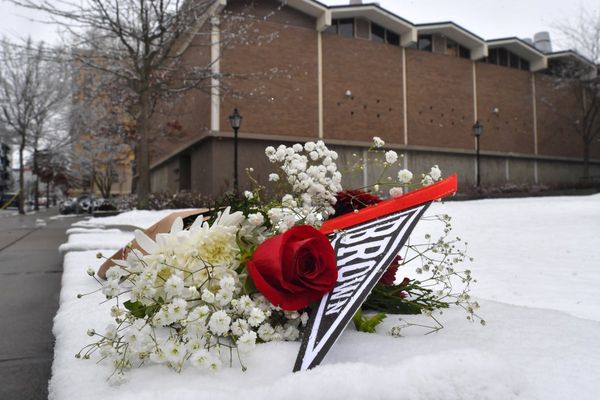
The US and Israel have sparked international condemnation over their leaked vision for the reconstruction of a shattered Gaza. The urban development plan seems to have evolved since its emergence earlier in the year. It now includes economic drivers such as blockchain-based trade initiatives, data centres and “world-class resorts”.
And its alignment to the proposed regional logistical network, the India-Middle East-Europe Corridor (Imec) aims to put it at the centre of a pro-American regional architecture.
The images and details that have emerged in the Gaza Reconstitution, Economic Acceleration and Transformation (Great) Trust blueprint indicate a vision that clearly pays homage to Gulf urbanism. Similar mega-projects, towers and speculative real estate ventures have driven the transformation of Dubai and other Gulf cities since the 1980s.
The 38-page document, initially published in the Washington Post, is an architectural fantasy of a hyper-modern, coastal enclave. Its planning origins seem twofold. First, it’s rooted in the libertarian ideologies of what’s known as a charter city – urban development spaces with different laws and institutions than the jurisdiction they sit within, such as Prospera in Honduras.
Second, it appears to take inspiration from the authoritarian control of oil-rich monarchies such as the UAE and Saudi Arabia. These states are now intimately aligned with US president Donald Trump and Israel itself.
The plan was reportedly aided by the Boston Consulting Group, with staff from the Tony Blair Institute apparently privy to previous discussions. Boston Consulting Group has since said that two of its former partners took part in the work without its knowledge. The Tony Blair Institute has also distanced itself, saying it has never “authored, developed or endorsed” plans to relocate residents from Gaza.
The US$100 billion (£74 billion) investor-led plan has all the standard ingredients of a new city. This includes prestige waterfront developments for the international elite. It envisages apartment blocks owned by international real estate developers, whether Saudi state-owned funds or US corporate trusts.
Special economic zones with favourable tax conditions supposedly promise advanced manufacturing potential. And various kinds of green and sustainable technologies are also proposed – potentially greenwashing the massive carbon footprint of the conflict.
Gaza is unlikely to be the next Dubai though. The plan includes massive Israeli security buffer zones, suggesting the likelihood of resistance from Palestinian militant groups to occupation. In all likelihood, it would also finally extinguish any prospect of a two-state solution.
The risks for financial investors will be massive. These include possible legal liabilities around land theft and potential incorporation into court proceedings on genocide at the International Court of Justice should these happen. It’s no wonder the plan has been described as “insane” by a senior associate at the Royal United Services Institute think tank, and opposed by some parts of the Israeli media.
Understanding the urban dimensions of the “Gaza Riviera” plan needs more than a planning lens though. It involves placing its development within the wider history and geography of Palestine. Doing so arguably positions the initiative less as a reconstruction effort and more as the next step towards the erasure of the Palestinian presence in the territory.
Scholars of settler colonialism have shown that its logic is one of elimination. This, it’s explained, is to enable territorial control and to establish a new settler society on the land. As Theodor Herzl, founding father of Zionism and held in high regard by Israeli prime minister Benjamin Netanyahu, argued: “If I wish to substitute a new building for an old one, I must demolish before I construct.”
Israel has previously asserted territorial control over Gaza, including the forced transfer of Palestinians to the territory in 1948, which they refer to as the Nakba (the catastrophe), as well as with illegal settlements between 1967 and 2005, and the blockade of the strip from 2007. All these forms of control should be understood within the logic of elimination. The most recent military onslaught in Gaza demonstrates the latest phase in this process.
The plan is reliant on two on-the-ground factors beyond the financial and geo-political – urbicide and expulsion. First, establishing this new society involves demolishing centuries of historical built environment and the support networks of urban life. This urbicide of Gaza is the deliberate destruction of its civil infrastructure, built environment, roads and hospitals, removing its physical character and functionality as a settlement.
What the plan would mean for Palestinians
Forensic Architecture is a group of researchers who use architectural techniques to investigate state violence and human rights abuses. Its Cartography of Genocide database has documented that the Israel Defense Forces’ spatial violence has been nearly complete in many areas of Gaza. This sets the necessary conditions for the plan to proceed.
The plan has little space for the 2.3 million Palestinians living in Gaza. There are reports of residents being offered up to US$5,000 to make way for the “Riviera”, supposedly on a temporary basis.
Meanwhile the Israeli military continues killing Palestinian civilians and pushing massive displacement within Gaza itself, while far-right Israeli politicians make public their desire to remove Palestinians from the territory.
Claims that Israel is committing genocide in Gaza – including from the International Association of Genocide Scholars – are becoming more widespread. Israel’s actions have resulted in death and injury to tens of thousands of Palestinians. The plan for the redevelopment of Gaza can also be understood within this settler colonial logic: an urban idea that, in order to be achieved, necessitates the erasure of all that stood before through the expulsion of the population and urbicide of the built environment.
Jonathan Silver does not work for, consult, own shares in or receive funding from any company or organisation that would benefit from this article, and has disclosed no relevant affiliations beyond their academic appointment.
This article was originally published on The Conversation. Read the original article.







